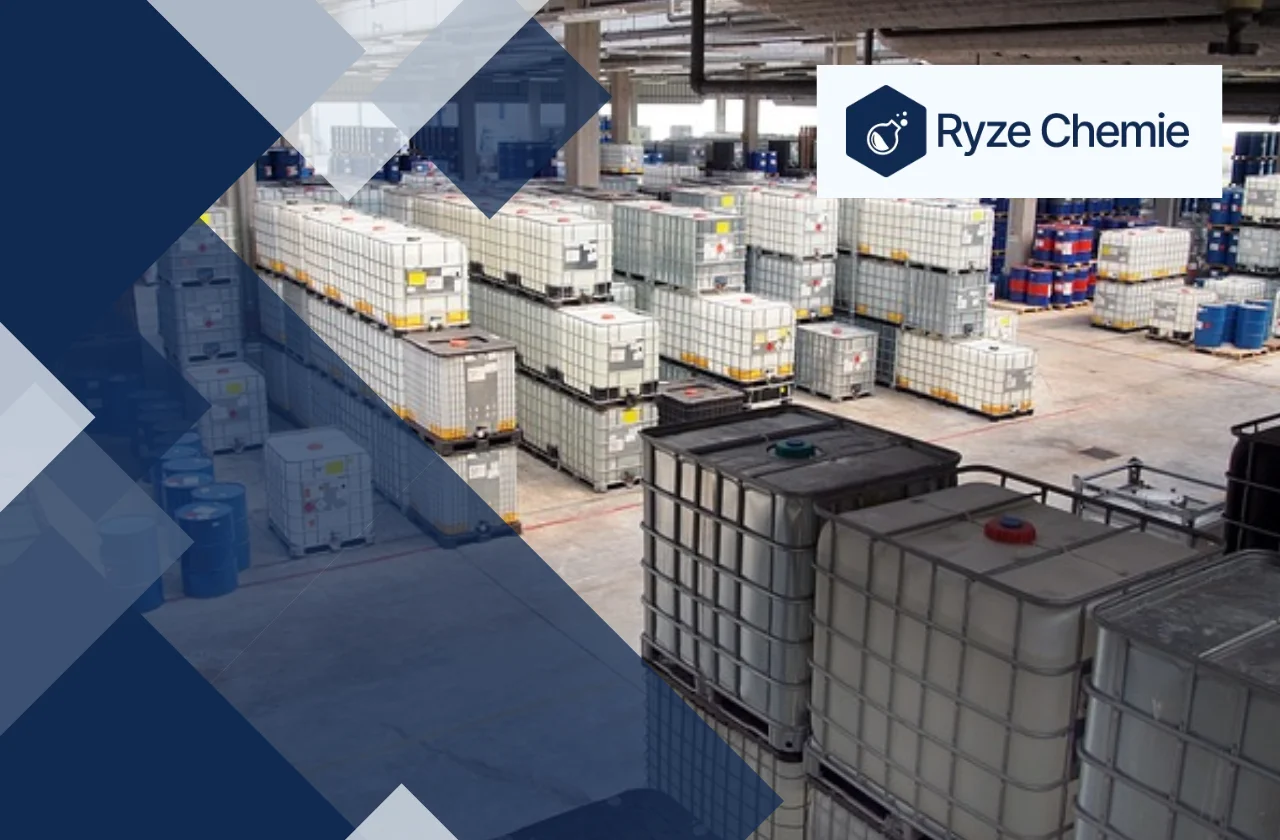
Stay up-to date on the
latest blogs. Join our
newsletter today!
This site is protected by reCAPTCHA and the Google Privacy Policy and Terms of Service apply.
Which Feature Is Most Important For A Chemical Storage Area

9 mins read · May 07, 2024

Ensuring safety in chemical storage is paramount for laboratory personnel. With potential hazards at every turn, identifying the most crucial feature of a storage area is vital.
Personnel often face challenges in navigating the myriad of options available. However, understanding the primary consideration can streamline decision-making and mitigate risks effectively.
In this article, we'll delve into the core feature that stands as the cornerstone of a secure chemical storage area. It is important for laboratory personnel to understand this essential element since it will enable them to enhance safety protocols and maintain a safe work environment.
Essential Features of a Chemical Storage Area
From a proper storage site perspective, we discuss the important mechanisms of action. By understanding and implementing these measures, laboratory personnel can ensure a safe work environment and prevent accidents related to improper chemical storage:
A. Safety
Ensuring safety is of utmost importance when it comes to the use of chemicals. A well-designed storage area reduces the risk of accidents and minimizes exposure to hazardous materials. From providing proper ventilation to using the right utensils, every element plays an important role in maintaining a safe environment:
Ventilation: Fume and Dust Control
Proper ventilation is crucial for removing hazardous fumes, dust, and vapors from the storage area. This prevents them from accumulating to dangerous levels and protects personnel from inhalation risks.
Two main ventilation systems are used in chemical storage:
General ventilation: This system continuously replaces air throughout the entire storage area. It's ideal for diluting low concentrations of non-reactive chemicals.
Local exhaust ventilation: This system removes fumes and dust directly from the source, like fume hoods used when working with chemicals. It's essential for highly toxic or reactive chemicals.
Choosing the right system depends on the types and quantities of chemicals stored. Local exhaust ventilation provides the most effective control, especially when working with hazardous chemicals.
Fire Safety: Prevention and Mitigation Strategies
Chemical storage areas are subject to fire due to the presence of hot water and combustible materials. Multiple measures are needed to prevent fires and minimize damage in the event of a fire.
Fire-resistant construction materials: Walls, ceilings, and doors should be built with fire-resistant materials that can withstand high temperatures for an extended period. This allows for safe evacuation and limits fire spread to other areas.
Flammable chemical storage cabinets: Flammable liquids should be stored in specially designed cabinets. These cabinets are constructed from fire-resistant materials and often have self-closing doors to contain a fire within the cabinet.
Fire alarms and suppression systems: Early detection and suppression of fires are critical. Chemical storage areas should be equipped with fire alarms to alert personnel and fire suppression systems, such as sprinklers, to extinguish flames.
Spill Containment: Liquid and Solid Chemicals
Spills can occur during the storage and handling of chemicals. Proper containment measures minimize the spread of spilled materials, protecting personnel and the environment.
Secondary containment: This refers to a physical barrier that captures spilled liquids. Examples include curbs around storage areas, spill trays under containers, and specially designed cabinets with built-in leak collection trays.
Spill clean-up materials: Having readily available spill clean-up materials allows for a quick and effective response to spills. The specific type of clean-up materials will depend on the chemicals stored but commonly include absorbent pads, neutralizers, and personal protective equipment (PPE) like gloves and goggles.
By implementing these essential features, laboratory personnel can create a safe and secure environment for storing chemicals.
Next, let's explore how organization and accessibility contribute to the overall safety of your chemical storage area.
B. Organization and Accessibility
Efficient organization is key to optimizing workflow and reducing the chances of errors. Clearly labeled shelves, segregated storage for different types of chemicals, and easy accessibility to emergency equipment are vital components of a well-organized storage area. This not only enhances productivity but also mitigates the risk of accidents caused by confusion or mishandling:
Chemical Compatibility
Chemicals can react violently when stored together if they are incompatible. Incompatible chemicals include:
- Acids and bases
- Flammables and oxidizers (like bleach or peroxides)
- Organic chemicals and strong acids/bases
Storing incompatible chemicals separately prevents accidental mixing that could lead to fires, explosions, or toxic gas generation.
Globally Harmonized System (GHS) Pictograms
The Globally Harmonized System (GHS) is a standardized system for classifying and labeling chemicals. GHS pictograms are symbols on chemical labels that quickly communicate the hazards of the contents. Familiarize yourself with the different GHS pictograms and their corresponding hazards. This allows you to easily identify potential risks when storing and handling chemicals.
Segregation
Different categories of chemicals require separate storage to prevent accidents. Common categories include:
- Flammables: Liquids with a flashpoint below a specific temperature (typically around 38°C or 100°F)
- Corrosives: Chemicals that can damage or destroy living tissues or other materials
- Poisons (toxic chemicals): Chemicals that can cause harm or death if inhaled, swallowed, or absorbed through the skin
Store these categories in designated areas within the chemical storage area. Flammables should be kept in specially designed flammable storage cabinets. Corrosives should be stored in acid/base cabinets that are resistant to their properties. Poisons should be stored in locked cabinets with limited access.
Labeling
Clear and consistent labeling is essential for safe chemical storage. All containers must have labels that include:
- Product identifier (name of the chemical)
- Signal word (e.g., "Danger," "Warning")
- Hazard pictograms (GHS pictograms)
- Precautionary statements (how to handle the chemical safely)
- Supplier information
Ensure labels are clear, readable, and not defaced. Follow recommended labeling standards from your institution or relevant regulatory bodies.
Storage Containers
Use appropriate containers for storing chemicals. Consider the following factors when choosing a container:
Chemical properties:
- Glass containers are suitable for most chemicals except those that react with glass (e.g., hydrofluoric acid).
- Metal containers are ideal for flammable liquids or chemicals that degrade in sunlight.
Size and weight: Choose containers that can safely hold the volume and weight of the chemical.
Compatibility: Ensure the container material is compatible with the stored chemical to prevent leaks or degradation.
Space Optimization
Efficient storage practices maximize space utilization while maintaining accessibility for safe retrieval. Here are some tips:
- Shelving systems: Install sturdy shelving units made of appropriate materials (e.g., metal for heavy chemicals). Label shelves according to the chemical category or hazard class.
- Floor plan organization: Designate specific areas for different chemical categories. Keep frequently used chemicals within easy reach while storing less frequently used or hazardous chemicals in designated areas with limited access. Utilize vertical space effectively by using shelves of appropriate height.
By following these guidelines, you can create a well-organized and accessible chemical storage area that promotes safety and efficiency in your laboratory. Remember, a clean and organized storage space not only improves safety but also saves time by allowing you to quickly locate the chemicals you need.
Now, let's move on to discuss the importance of security measures and access control in safeguarding your chemical inventory.
C. Security and Access Control
Protecting your chemical inventory from unauthorized access is crucial for both safety and compliance. Implementing security measures such as restricted access areas, surveillance systems, and inventory tracking protocols helps prevent theft, misuse, and unauthorized handling of hazardous materials:
Security and Access
Restricted Access: Limiting access to authorized personnel only is vital for several reasons. Chemicals can be hazardous if misused. People unfamiliar with the dangers of specific chemicals could be injured by improper handling or accidental spills. Additionally, some chemicals have the potential to be misused for malicious purposes. By restricting access, you can minimize these risks.
Secured Storage Rooms: Chemical storage should ideally take place in a dedicated room with a self-closing, fire-resistant door. This room should be separate from areas with high foot traffic or where incompatible chemicals might be present.
Proper Signage: Clear signage is essential for a safe chemical storage area. All storage containers must be labeled with the chemical name according to the Globally Harmonized System (GHS). Secondary containers should also be labeled with the chemical name and date transferred. Warning signs should be posted on the door to the storage room indicating the types of chemicals stored inside and any specific hazards associated with them.
Inventory Control
Maintaining an accurate inventory of chemicals is crucial for several reasons. It allows you to:
- Track Chemical Usage: Knowing how much of a chemical you have on hand helps you determine when to reorder and prevents overstocking. Overstocked chemicals can clutter storage space and pose a safety risk if they expire or become unusable.
- Prevent Overstocking: Overstocking chemicals can not only waste money but also create safety hazards. Expired chemicals may lose their potency or become unstable, increasing the risk of accidents. Having an accurate inventory helps you avoid these issues.
- Facilitate Emergency Response: In the event of a spill or other emergency, knowing exactly what chemicals are stored and their quantities is essential for a quick and effective response.
- Meet Regulatory Requirements: Many regulations require laboratories to maintain an inventory of hazardous chemicals. An accurate inventory will ensure you are compliant with these regulations.
There are several ways to maintain an inventory of chemicals. A simple spreadsheet can be effective for small laboratories. Larger facilities may use specialized software programs designed for chemical inventory management. Regardless of the method you choose, the key is to have a system that is easy to update and allows you to quickly track chemical usage and quantities.
Conclusion
Designing an effective chemical storage area requires careful consideration of safety, organization, and security. By implementing proper protocols and utilizing appropriate resources, laboratory personnel can create a workspace that not only enhances efficiency but also ensures the well-being of everyone in the vicinity. Remember, a well-designed storage area is the foundation of a safe and productive laboratory environment.
Latest Blogs








